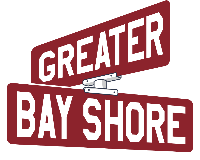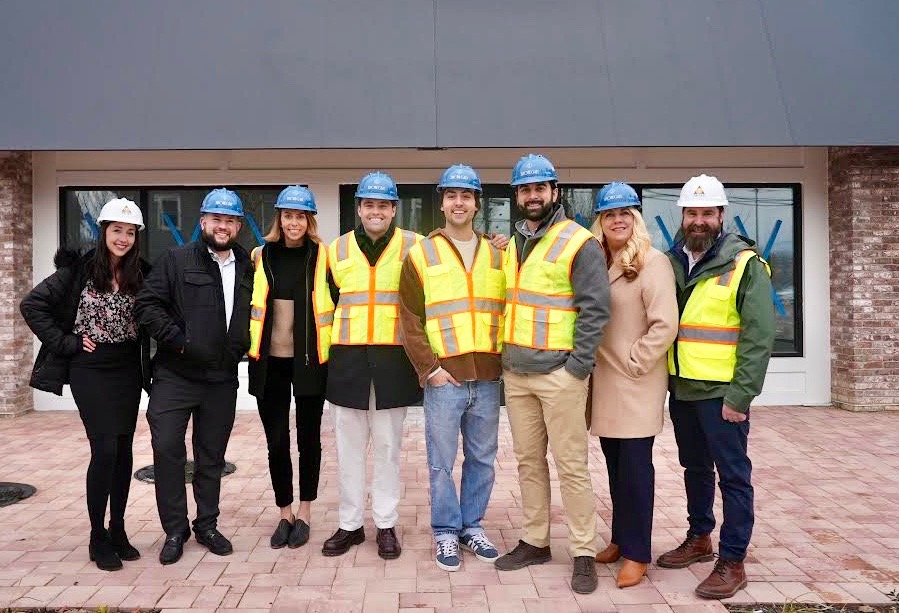
Greater Bay Shore coverage is funded in part by Shoregate, now leasing brand-new premium apartment homes in the heart of Bay Shore. Click here to schedule a tour.
by CDR George Munkenbeck, USCGR (Ret.)
Islip Town Historian |
Less than three months after the publication of the Emancipation Proclamation, Frederick Douglass stood before an audience in Rochester, New York, and started his speech with the words, “Men of color, to arms!”
Those words electrified those hearing them and in the days to follow would do the same for the African-Americans, both slave and free.
While there had been a few efforts to recruit African-American formations for the U. S. Army prior to 1863 and some of those had seen action, the formation of the 54th and 55th Massachusetts Volunteer Infantry Regiments, noted by Frederick Douglass at the end of the speech, were units meant from the first to be combat formations and not just labor battalions.
”Men of Color, to Arms” Islip Town and the United States Colored Troops
On display at Brookwood Hall, Islip Town History Room February 1-28, 2017
It became rapidly apparent that many of the states did not want to recruit, muster and equip African-American formations so in a short time the federal government took over the task and designated most of the nascent formations “United States Colored Troops (USCT).”
The men who served in these formations were proud of the designation as they were federal formations and set apart in a way. This is not to say that the formations were accepted by the rest of the army. At first, they were not well received, the actions and discipline of these troops in service won over many of their critics.
They still had to face prejudice.
For instance, while there were no restrictions on non-commissioned officer billets, but for much of the war all commissioned officers of these formations were white. In the U. S. Army, there were initial issues with getting supplies and food which the officers had to work to overcome. With formation of all USCT brigades this supply problem improved rapidly as they then had their own commissary and ordnance officers assigned.
The discrimination against the USCT also did do some good. By the time they were formed, all the shoddy uniforms, equipment and arms were issued and unscrupulous contractors weeded out, so for the most part they were issued good equipment, brand-new uniforms and arms. In addition, after some initial problem appointments, the white officers who were combat veterans, were tested, vetted for ability and qualified for command. They used this experience to train their men for what they would face.
In many cases, the delay in committing the USCT created by prejudice and the belief that they would not fight meant that they had more training than regiments entering combat earlier in the war. For the record, during the Civil War recruit training was rudimentary at best, but at least they had more time to learn the drill.
One other issue that plagued all regiments was the lack of practice with their weapons as the government did not really relish wasting ammunition on target practice, so most regiments marched off with little more than knowing how to load their weapons.
Despite that, if there were any doubts about the combat abilities of the USCT, the actions of the African-American troops at Olustee (Ocean Pond), Florida dispelled the doubts.
They were brave men as despite being threatened with death (this also included the white officers) and enslavement by the Confederacy thousands joined. By the end of the war in 1865, the United States Colored Troops made up approximately ten percent of the U. S. Army even though they were prohibited from joining until July 1862 and full scale recruiting did not begin until 1863.
They also comprised twenty-five percent of the U. S. Navy, yet, only one percent of the Northern population was African American! While many members were former slaves who had escaped or whose homes were now in Union hands, the men we honor with the display in the history room at Brookwood Hall in East Islip, were all free men, born free, who enlisted and were drafted in some cases to serve far from home and family to save the Union.
A study of the records to date has revealed seven veterans from Islip Town who served in the USCT. We have just started to scratch the surface on fleshing out the story of these brave men who served in several different including some who served alongside the famous 54th Massachusetts at the Battle of Olustee.
These veterans became leaders of the African-American community and while they faced both discrimination and prejudice in spite of their valiant service they laid the foundations for the civil rights movement and leaders of today.
Lest We Forget – Islip Residents Who Were Veterans of the United States Colored Troops:
Private Horace J. Mingo, an 18-year-old farmer from Bay Shore, New York entered Company D of the 26th United States Colored Infantry, enlisted December 18, 1863 for a period of 3 years. The records show that he originally enlisted in the 20th United States Colored Infantry but was transferred to the 26th United States Colored Infantry forming at that time on Riker’s Island, New York. The regiment was sponsored by the Union League Club of New York they reported for duty at Beaufort, South Carolina for garrison duty on April 3, 1864. The record does not show his engagements or assignments but the regiment did participate in the following actions during this time – Expedition to Johns and James Islands July 2–10; Operations against Battery Pringle July 4–9; Actions on John’s Island July 5 and 7; and Burden’s Causeway July 9. No record has been located that pinpoints when he went into the hospital. He died of Remittent Fever (probably Malaria) in the General Hospital at Beaufort, South Carolina, on August 23, 1864 and was buried in Lot 22, Grave Number 723 in Beaufort Military (now National) Cemetery.
Private William Treadwell, a 24-year-old-farmer from Islip Town went to Rhode Island to enlist in Company E of the 14th Rhode Island Heavy Artillery. Enlisting on October 3, 1863, for 3 years, his regiment was made part of the USCT with its designation eventually changed to Company E, 11th United States Colored Heavy Artillery. Heavy Artillery regiments were trained to man the batteries and protect fixed fortifications, but often they found themselves being used as infantry, as they put it “in red facings.” Red was the color that designated artillery troops while infantry wore light blue facing colors. The regiment was used for garrison duty at New Orleans and other points in the defenses of that city till October, 1865. This duty involved manning the fortifications along the Mississippi far down the river from the city and regimental letters and records show that there were many patrols to keep back guerilla units and attacks by bands of Confederate soldiers who harassed the troops patrolling the levees. Records show he was discharged October 2, 1865, at New Orleans, Louisiana.
Private Benjamin James, from Islip Town, served in the 20th United States Colored Infantry but his military records have not been located at the time of this display.
Private Arthur H. Strong, from Islip Town, served in Company I of the 8th United States Colored Infantry, enlisting on September 1, 1863 for a term of three years or during the war. At the time of his enlistment he was 22 years old and by occupation a farmer. This was one of the most famous USCT regiments. Records show he died of Typhoid Fever in the Regimental Hospital at Yellow Bluffs, Florida on June 9, 1864
Corporal George F. Jayne, from Bay Shore, New York, was a 20-year-old laborer when he enlisted at Jamaica, New York, in Company H, 8th United States Colored Infantry on September 1, 1863 for 3 years. During its Civil War service the 8th United States Colored Troops lost 4 Officers and 115 Enlisted men killed and mortally wounded, and 132 enlisted men by disease, total casualties were 251. Records show Corporal Jayne was in action at Deep Bottom, Virginia, August 16-18, 1864; Chapin’s Farm, Virginia, September 29-30, 1864; Darbytown Road, Virginia, October 13 and 27, 1864; Before Petersburg, Virginia, April 2, 1865; Appomattox Court House, April 9, 1865. He was discharged November 10, 1865 at Brownsville, Texas.
Private Cornelius H. Harris, a 23-year-old laborer from Islip Town when he enlisted in Company H, 20th United States Colored Infantry on September 23rd, 1864 for the term of one year. Records show that he was discharged at Milliken’s Bend, Louisiana on September 25, 1865. This regiment was organized at Riker’s Island, New York, February 9, 1864, to serve three years. It first served in the Department of the East to March, 1864, then was transferred to the District of New Orleans, Department of the Gulf, until January, 1865. It ended its service in the Southern Division of Louisiana, Department of the Gulf, and was honorably discharged and mustered out, October 7, 1865. During its service it lost by death, of wounds received in action, 1 enlisted man; of disease, I officer, 263 enlisted men; drowned, I enlisted man; of suicide, I officer, 3 enlisted men; of sunstroke, i enlisted man; of causes not stated, 14 enlisted men; total, 2 officers, 283 enlisted men; aggregate, 285.
Private William H. Gilchrist, of Islip, New York, was 35 years old when he enlisted in Co. H, 8th United States Colored Infantry. On his enlistment papers, he stated he was a laborer, but subsequent assignment as regimental and later Brigade and Corps Carpenter showed that he was probably a carpenter before the war. He enlisted on September 1, 1863 for 3 years or during the war and records show he was in action at Olustee (Ocean Pond), Florida, February 20, 1864; Deep Bottom, Virginia, August 16-18, 1864; Chapin’s Farm, Virginia, September 29-30, 1864. The 8th was the most heavily engaged regiment at Olustee, Florida and the relatively “green” and untried regiment suffered 310 casualties—the heaviest regimental loss in the entire battle. He lived to be discharged November 10, 1865 at Brownsville, Texas
Assistance Needed
A great deal more research needs to be done to tell the full story of these Islip veterans.
If you want to help, know where any of those who came home are buried or perhaps are a descendent of one of these men or any Civil War veteran please contact the Islip Town Historian to add input or to gain help on research. Theirs is a legacy for all Islip residents to honor.
14nysmchaplain@reagan.com | 631-567-4939
























